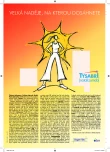Cranial Neural Tube Defects
Authors:
F. Horn 1; M. Smrek 1; J. Babala 1; M. Fuňáková 1; D. Poruban 2
Authors‘ workplace:
Klinika detskej chirurgie LF UK a DFNsP, Bratislava
1; Klinika stomatológie a maxilofaciálnej chirurgie LF UK a OÚSA
2
Published in:
Cesk Slov Neurol N 2010; 73/106(6): 706-710
Category:
Short Communication
Overview
Introduction:
Neural tube defects (NTD) are congenital malformations of the central nervous system caused by failure of fusion in the course of embryological development. They occur in both the caudal and the cranial region. The authors present a group of patients with cranial NTD treated at the Department of Paediatric Surgery in Bratislava. The aim is to point out the importance of timing for surgery, especially in the management of hydrocephalus. Materials and methods: Ten patients with cranial NTD were treated at our surgery unit during the period 2000–2008. Seven patients presented with the occipital type of NTD, two patients with the parietal type, and one patient with the fronto-orbital type. Seven patients were suffering from current ventriculomegaly, and arachnoid cyst was also diagnosed in three patients. Six patients were operated on immediately after their birth, the following two, with non-severe meningocele, were operated upon at the age of three months, while two patients were referred to the institution at more advanced ages. Two patients with large bone defect were managed by two-stage repair – closure of the cephalocele and later, at the ages of four and six years respectively, reconstruction of the bone defect. Six patients with hydrocephalus had a ventriculoperitoneal (VP) shunt. Results: A total of eight children are developing normally, one patient has a slight impairment of muscle tone, and one patient is lagging significantly in her development. She was admitted too late, with ulcerations as a complication of hydrocephalus. Three patients with hydrocephalus have pharmacologically managed epilepsy. Conclusion: The group of patients is too small for proof, but it appears that patients with cranial NTD have a good chance of normal development, including those with hydrocephalus. Impairment of development arises largely out of maladministration of hydrocephalus. The authors suggest early surgical treatment for all cranial NTD, with ventriculoperitoneal shunt in concomitant hydrocephalus. Correction of bone defect can be performed as secondary treatment for patients in which it persists into later age.
Key words:
cranial neural tube defects – encephalocele – hydrocephalus – ventriculomegally
Sources
1. Behunová J, Podracká Ľ. Rázštepy nervovej trubice – súčasné pohľady na etiopatogenézu a možnosti prevencie kyselinou listovou. Čs Pediatrie 2008; 63 : 38–46.
2. Dragula M. Rázštepy neurálnej trubice. In: Zibolen M et al (eds). Praktická neonatológia. Martin: Neografia 2001 : 212–216.
3. Kotil K, Kilinc B, Bilqe T. Diagnosis and management of large occipitocervical cephaloceles: a 10-year experience. Pediatr Neurosurg 2008; 44(3): 193–198.
4. Lo BW, Kulkarni AV, Rutka JT, Jea A, Drake JM, Lamberti-Pasculi M et al. Clinical predictors of developmental outcome in patients with cephaloceles. J Neurosurg Pediatrics 2008; 2(4): 254–257.
5. Hornová J, Tichá Ľ, Benedeková M. Výživa matky a jej vplyv na vývoj dieťaťa. Pediatr prax 2007; 2: 105–106.
6. Šabová L, Kovács L. Kyselina listová a vrodené vývojové chyby. Pediatr prax 2008; 1 : 36–38.
7. Hector EJ. Encephalocele. In: Mc Laurin et al (eds). Pediatric neurosurgery. 3rd ed. NY: W. B. Saunders 2002 : 97–110.
8. Šulla I, Faguľa J, Výrostko J, Kundrát I. Cephalocele. Čs Pediatrie 1981; 36(1): 6–8.
9. Ahmad FU, Mahapatra AK. Neural tube defects at separate sites: further evidence in support of multi-site closure of the neural tube in humans. Surg Neurol 2009; 71(3): 353–356.
10. Emsen IM, Benlier E. A new approach on reconstruction of frontonasal encephalomeningocele assisted with medpor. J Craniofac Surg 2008; 19(2): 537–539.
11. Omaník P, Horn F, Smrek M, Béder I, Murár E, Trnka J et al. Použitie alogénneho materiálu pri riešení spina bifida aperta. Rozhl Chir 2008; 87(10): 527–530.
12. Mahapatra AK, Suri A. Anterior encephaloceles: a study of 92 cases. Pediatr Neurosurg 2002; 36(3): 113–118.
13. Mahapatra AK, Agrawal D. Anterior encephalocele: a series of 102 case over 32 years. Neurol India 2006; 54(1): 97–99.
14. Matejčík V, Šteňo J, Poruban D. Reconstruction of the skull base after injuries. Bratisl Lek Listy 2007; 108(2): 107–111.
15. Nasu W, Kobayashi S, Kashiwa K, Honda T. Secondary craniofacial reconstruction of huge frontoethmoidal encephalomeningocele after primary neurosurgical repair. J Craniofac Surg 2008; 19(1): 171–174.
16. Cornette L, Verpoorten C, Lagae L, Plets C, Van Calenbergh F, Casaer P. Closed spinal dysraphism: a review on diagnosis and treatment in infancy. Eur J Paediatr Neurol 1998; 2(4): 179–185.
17. Van Calenbergh F, Vanvolsem S, Verpoorten C, Lagae L, Casaer P, Plets C. Results after surgery for lumbosacral lipoma: the significance of early and late worsening. Child Nerv Syst 1999; 15(9): 439–443.
Labels
Paediatric neurology Neurosurgery NeurologyArticle was published in
Czech and Slovak Neurology and Neurosurgery

2010 Issue 6
- Advances in the Treatment of Myasthenia Gravis on the Horizon
- Memantine Eases Daily Life for Patients and Caregivers
- Possibilities of Using Metamizole in the Treatment of Acute Primary Headaches
- Metamizole vs. Tramadol in Postoperative Analgesia
Most read in this issue
- Spontaneous Regression of Sequestrated Lumbar Disc Herniation – Three Case Reports
- Assessment of State of Health and Capacity for Work in Post-Stroke Patients – Case Reports
- The Bristol Activities of Daily Living Scale BADLS-CZ for the Evaluation of Patients with Dementia
- Autisms
